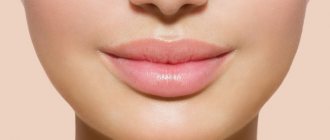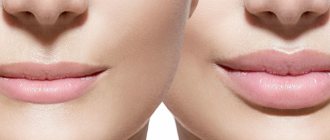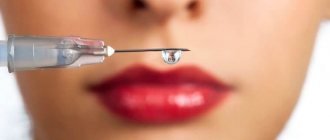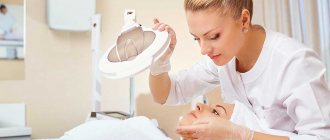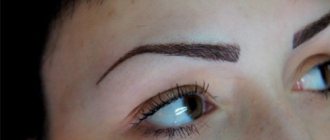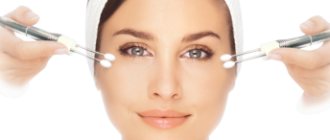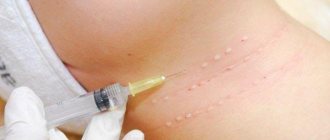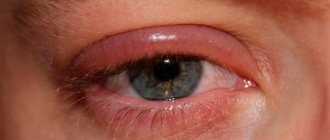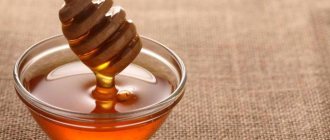Free consultation with a doctor by phone
Surgeon appointments are available daily by appointment!!!
LLC "Your Doctor"
Chat with the doctor
Addresses of medical centers in Moscow (unified reference) +7 (495) 255-45-59
Make an appointment at the clinic Discount on services Promotions
- +7 (495) 255-45-59
- Surgical centers in Moscow
- Every day from 9.00 to 20.00
- call me back
You can make an appointment with our operators by calling +7 (495) 255-45-59
Prices for services Clinic address Make an appointment Call a surgeon to your home Pediatric surgeon Ligation
An abscess after an injection can occur in anyone who has undergone this unpleasant procedure at least once in their life. If intramuscular injection is performed correctly, the risk of developing an abscess is minimal. However, there are situations when a lump may appear at the injection site, which does not dissolve for a long time.
In the worst case, the injection site may become red and inflamed, and pus begins to accumulate in this area, which is surrounded by a capsule. In this case, you should not delay contacting a doctor.
Useful information on the topic:
- Abscess treatment
- Opening an abscess
- Purulent abscess
- Abscess of the buttocks
- Abscess removal
- Abscess in pregnant women
- Bartholin gland abscess
- Abscess in a child
- Finger abscess
- Abscess puncture
- Skin abscess
- Causes of abscess
What symptoms are typical?
An abscess after an injection does not present difficulties for diagnosis in the vast majority of cases. Signs of abscess development may be as follows:
- A few days after the injection, hardening and swelling of the soft tissue appears. On palpation, pain is noted at the injection site. These symptoms may go away spontaneously after a few days. At this stage, it is possible to help the patient with home remedies.
- The pain at the injection site becomes more intense and intensifies when changing body position, trying to sit down, or touching. Sometimes patients complain that the pain penetrates to the bones.
- The skin at the injection site turns red, swells, and becomes hot. There may be an increase in overall body temperature.
- When palpating the injection site, a compaction is detected with a focus of softening and fluctuations in the center.
Timely seeking medical help at our clinic will help cure the unpleasant consequences of the injection. Only a surgeon should treat at the stage of abscess formation.
Useful information about visiting a surgeon at the clinic:
- How to prepare for a surgeon's appointment
- What diseases does the surgeon treat?
- Calling a surgeon to your home
- Surgical care in the clinic
- Surgical care at home
- What symptoms should you contact a surgeon for?
- Treatment of surgical diseases
- Treatment of intestinal pathologies
- Treatment of skin surgical pathologies
- Treatment of bedsores and necrosis
- Treatment of parasitic diseases
- Treatment of inflammatory processes of soft tissues
- Treatment of diseases of the musculoskeletal system
- Diagnosis of surgical diseases
Observation after vaccination
If the lump is small and lasts no longer than 3-5 days, there is nothing to worry about. Many mothers begin to worry when the lump grows or when it does not go away for a long time. But here, first of all, you need to look at the child’s well-being: if there are no noticeable problems, then you should not panic, even if the lump does not resolve for a couple of weeks.
To know exactly what reactions are possible after vaccination, carefully read the instructions for the vaccine. We advise you to follow the following rules after vaccination:
- Do not wet or heat the injection site, it should be dry. Wear clothing to prevent the injection site from sweating.
- When you wash, do not rub the injection site with a washcloth; it is better if soap does not get on it.
- Do not treat the wound with anything, including ointments (for example, Vishnevsky), creams, brilliant green and iodine: by your actions you can turn the body’s normal reaction to a vaccine into an abscess.
- Do not rub or comb the wound, do not crush or put pressure on it, and do not let your child do this.
- You should dress in loose clothing so that the injection site does not rub against the fabric. It is better to choose clothes made from natural fabrics, as synthetics can cause an allergic reaction.
How to relieve the condition
Since the lump is a common local reaction to the vaccine, we strongly advise you not to panic and avoid self-medication: after 3-5 the lump will resolve itself, and the wrong medications can only worsen your health. If your child tries to scratch the injection site, you can cover it with a light gauze bandage.
Reasons for the development of abscesses after an injection
Any intramuscular injection is an invasive procedure. Such an intervention violates the integrity of the skin and triggers a whole chain of pathological changes. As a rule, the cause of an abscess is incorrect administration of injections in violation of the rules of asepsis and antisepsis. Often such complications occur if the injection was given at home.
Predisposing factors for the development of an abscess are decreased immunity and a sharp weakening of the body.
The correct way to administer the injection is to insert a needle into the upper outer quadrant of the buttock. It is permissible to inject the medicine into the muscle layer of the shoulder or thigh. If the syringe needle enters a large blood vessel, hemorrhage occurs into the soft tissue, which can lead to the development of an abscess. A number of drugs can have an irritating effect on tissue; when administered not into the muscle, but into the subcutaneous fat, it can also lead to the formation of an abscess.
If the wound at the injection site was scratched, this could serve as an entry point for infection and cause a suppurative process.
What symptoms do you see a surgeon for:
- Presence of hernial protrusion
- Daggering pains in the abdomen
- Bloating
- Pain in the right hypochondrium
- Bitterness in the mouth
- Nausea
- Presence of neoplasms on the skin
- Swelling and redness of the skin
- Bone fractures and bruises
- Wounds of any location
- Vomit
- Enlarged and painful lymph nodes
Quincke's edema: outpatient care
Sudden local edema, called angioedema (angioedema, giant urticaria), is encountered in the practice of a doctor of any specialty. They were first described in 1882.
The origin of this swelling may be different. They often appear as a result of contact with an allergen, that is, as a result of an allergic reaction (a reaction that occurs through immunological mechanisms). But Quincke's edema can also be of non-allergic origin (pseudo-allergic reactions). In this case, the edema reflects some other somatic pathology, most often various diseases of the gastrointestinal tract and hepatobiliary system. But in addition to gastroenterological pathology, the tendency to local edema is influenced by dysfunction of the endocrine system (or disorders of neuro-endocrine regulation), chronic foci of infection, tumor (Quincke's edema as a paraneoplastic reaction), systemic and some other diseases, and parasitic invasion. There are also edemas that appear under the influence of chemical (including medications) and physical (temperature, pressure, vibration) factors. Quite often, angioedema develops under the influence of several factors. There is hereditary vibration angioedema. Its mechanism is not clear; An increase in histamine levels was found after exposure to a vibration stimulus. The type of inheritance is autosomal dominant.
The general pathogenetic mechanism of any angioedema is a violation of the permeability of the microvasculature with the subsequent development of local edema.
The localization of edema can be different: face, mucous membrane of the oral cavity and gastrointestinal tract, larynx, external genitalia, parenchymal organs and meninges.
In most cases, edema is accompanied by urticaria (and angioedema itself can be considered as a deeper manifestation of urticaria), but they can also be an independent disease.
Another disease has a similar clinical picture - hereditary angioedema (HAE), which occurs as a result of congenital pathology - deficiency or functional inferiority of the inhibitor of the first component of complement.
Treatment for angioedema is carried out in 2 stages: the first is relief of the acute condition, the second is treatment of the cause of the disease. Treatment includes elimination of identified causative factors, symptomatic therapy, basic therapy and prevention of exacerbations (prevention of relapses of edema).
Localization of edema in the face, neck, oral cavity, and larynx can lead to asphyxia. Therefore, in such cases, treatment measures should be carried out quickly and efficiently. Difficulty breathing caused by swelling of the airways is a direct indication for hospitalization of the patient. The development of laryngeal edema may require emergency intubation or tracheostomy.
In addition, indications for inpatient treatment include intestinal edema, hypovolemia, failure of outpatient treatment, or the development of any life-threatening complications of angioedema. If there is no threat to the patient’s life, then treatment can be carried out on an outpatient basis.
The most commonly used drugs in the treatment of angioedema are histamine H1 receptor antagonists: fexofenadine in a dose of 60 to 240 mg 1-2 times a day; desloratadine - 5 mg/day; loratadine - 10 mg/day; cetirizine - 10–20 mg/day; ebastine - 10 mg/day; acrivastine - 8 mg 3 times a day; clemastine - 1 mg 2 times a day orally, 2 mg 2 times a day parenterally; chloropyramine - 25–50 mg/day orally, 20–40 mg parenterally; diphenhydramine - 30–50 mg 1–3 times a day orally, 20–50 mg 1–2 times a day parenterally; hydroxyzine - 25–50 mg every 6 hours; chlorpheniramine - 4 mg every 4-6 hours.
In more severe cases of angioedema, as well as when treatment with antihistamines is ineffective, a short course of parenteral treatment with glucocorticosteroids is administered: prednisolone - 40-60 mg/day, dexamethasone - 8-20 mg/day.
Further treatment of recurrent angioedema (second stage of treatment) will depend on the form of the disease.
Angioedema, occurring through the mechanisms of true allergy, requires unconditional elimination (exclusion) or limitation of contact with identified allergens in case of household, epidermal, pollen, food, occupational, drug, insect, fungal allergies. Otherwise, the treatment will be ineffective.
In the event of the appearance of angioedema resulting from exposure to physical factors, it is necessary to limit their effect on the patient: use photoprotective creams for angioedema due to insolation, avoid wearing heavy objects, tight shoes, use belts for edema resulting from pressure, avoid eating ice cream and other chilled drinks and foods for cold swelling, etc.
If the swelling is of non-allergic origin, then treatment is carried out after an in-depth clinical examination. It includes therapy for identified somatic pathologies (including rehabilitation of chronic foci of infection, such as tonsillitis, treatment of parasitic infestations, correction of intestinal dysbiosis, treatment of thyroiditis, diseases of the gastrointestinal tract and hepatobiliary system and other diseases that contribute to the development of pseudo-allergy). Such patients are prescribed a nonspecific hypoallergenic diet, which involves limiting the consumption of foods rich in histamine, tyramine, and histamine liberators (Table 1, 2, 3).
Symptomatic drug treatment of chronic, recurrent angioedema is also carried out with antihistamines. With a weak response to H1 receptor antagonists, the following are added to therapy: histamine H2 receptor antagonists (ranitidine - 150 mg 2 times a day, cimetidine - 300 mg 4 times a day, famotidine - 20 mg 2 times a day); leukotriene receptor antagonists (montelukast - 10 mg/day); calcium channel blockers (nifedipine - 20–60 mg/day).
For angioedema associated with systemic connective tissue diseases, drugs used in rheumatology (hydroxychloroquine, dapsone, colchicine, sulfasalazine) may be effective.
Treatment of hereditary angioedema is fundamentally different from the treatment of angioedema. Unrecognized HAE and, accordingly, inadequate therapy in many cases result in death. Diagnostic differences between HAE and allergic edema are presented in Table 4.
In the acute period, HAE is relieved by the administration of fresh or fresh frozen native plasma (replacement of C1 inhibitor deficiency), intravenous administration of tranexamic or aminocaproic acid. Danazol 800 mg/day (or stanozolol 12 mg/day) can also be administered. For swelling in the face and neck, furosemide (Lasix) and dexamethasone are additionally administered intravenously.
All patients with angioedema must have an “allergy patient passport” or a medical bracelet with information about the disease.
For questions regarding literature, please contact the editor.
S. V. Tsarev , Candidate of Medical Sciences, State Research Center Institute of Immunology, FU Medbioextrem, Ministry of Health of Russia, Moscow
Table 1. Products that can provoke angioedema
| Foods containing histamine-releasing substances | Foods rich in biogenic amines |
| Chocolate, strawberries, citrus fruits, tomatoes, crustaceans and oysters, coriander, pork, fish, alcohol, nuts, peanuts | Chocolate, sauerkraut, ham, stale cheese, fermented cheese, red wine, beer, fish, sausage; there is a lot of histamine in overripe and fermented foods |
Nutritional supplements:
|
Table 2. Foods High in Histamine
| Products | Histamine content (µg/g) |
| Fermented cheeses | Before 1330 |
| Fermented wines | 20 |
| Fermented foods: | |
| sauerkraut | 160 |
| cured ham and beef sausages | 225 |
| pork liver | 25 |
| Canned foods: | |
| tuna | 10-350 |
| anchovy fillet | 20 |
| herring fillet | 33 |
| herring caviar | 350 |
| Spinach | 37,5 |
| Tomatoes | 22 |
Table 3. Foods High in Tyramine
| Products | Tyramine content (µg/g) |
| Cheeses: | |
| Roquefort | More than 3000 |
| Camembert | 20-86 |
| brie | 180 |
| griar | 516 |
| Cheddar | 1466 |
| fused | 50 |
| Brewer's yeast | 1500 |
| Pickled herring | 3030 |
| Avocado | 23 |
Table 4. Differential diagnosis of hereditary angioedema and allergic edema
| Clinical and laboratory signs | Hereditary angioedema | Allergic edema |
| Presence of atopic diseases | Very rarely | Often |
| Relationship to allergen exposure | No | Eat |
| Trauma Connection | Clear | No |
| Blood eosinophilia | No | Often |
| Local hyperemia and itching | No | Eat |
| Hives | No | Eat |
| Effect of antihistamines and corticosteroids | No | Eat |
| Cyclicality | Often | No |
| Total IgE level | Norm | Often elevated |
| Complement system defect | There is always | No |
How to treat an abscess
The abscess is removed by a surgeon. If you do not seek medical help in a timely manner, this can lead to even more serious consequences for the patient.
- If the inflammatory process is infiltrative and non-purulent, conservative treatment is used. Physiotherapy, absorbable medications, and warm compresses are prescribed. It is recommended to lubricate the injection site with an alcohol solution of iodine.
- If pus begins to form at the site of inflammation, the doctor at our clinic will perform a puncture, remove the accumulated pus and rinse the cavity.
- If the abscess is deep, surgical treatment is performed. An incision is made at the site of the abscess, the cavity is washed and drained.
- In case of an extensive process and symptoms of general intoxication, treatment with antibiotics, immunomodulators, and vitamins is prescribed.
Qualified specialists at our clinic treat purulent inflammatory diseases using the most effective and safe methods and medications.
Diagnostic methods in surgery:
- Doppler in surgery
- Colonoscopy
- Angiography
- CT scan
- Gastroscopy
- MRI
- Abdominal ultrasound
- X-ray
- Endoscopy
Prices:
| Code | Name of service | Prices |
| 1 | Initial appointment | 1200 |
| 2 | Repeated appointment | 900 |
| 3 | Calling a surgeon to your home | 3500 |
| 4 | Abdominal ultrasound | 2200 |
| 5 | Ultrasound of veins and vessels | 2400 |
| 6 | Doppler 2-3 trimester | 1200 |
| 7 | Rectoscopy | 1500 |
Tips and tricks
To know more or less accurately what local reactions are possible, carefully study the instructions for the drug: it is not always possible to find detailed descriptions of reactions there, but the main ones should be written about.
If your hand hurts too much, interferes with sleep or distracts you from work, you can take painkillers - Paracetamol and Ibuprofen. As for the use of ointments or other external influences on the injection site to relieve pain, there are as many doctors as there are so many opinions: some are categorically against it, while others, for example, advise applying a clean wet cloth. It is better to look at the instructions and consult a doctor before vaccination.
After vaccination, try to follow these simple rules:
- As a preventive measure, immediately after the injection, press the injection site with a cotton swab for 2-3 minutes.
- The injection site should remain dry; it is better not to wet it or heat it.
- Wear well-ventilated, loose-fitting clothing to prevent the injection site from sweating or rubbing against the fabric.
- When you wash, do not rub the injection site with a washcloth; try not to get soap on it.
- Do not treat the wound with ointments, creams, brilliant green or iodine: you can turn the body’s normal reaction to the vaccine into an abscess.
- Do not scratch the injection site.
How to prepare for the injection?
If you are to undergo a course of therapy with intramuscular administration of drugs, then purchase three-component syringes (they have a black gasket on the piston). Such syringes inject the medicine evenly, in a thin stream, which prevents damage to blood vessels and does not cause bruising. Three-component syringes are best purchased from a trusted pharmacy. Before the injection itself, relax as much as possible, it is best to lie on your back.
A short massage of the injection site with an alcohol cotton swab (tampon) or light slaps on the site of the future injection helps.
If drugs are to be administered in particularly sensitive areas, for example, anesthesia when removing fibroids on the face, then a week before it is necessary to abandon aggressive peelings and other care procedures.
How to remove the Tyndall effect
If a filler based on hyaluronic acid was used, it needs to be absorbed. Most often, hyaluronic injections are used, so to eliminate the consequences, an injection of an enzyme preparation, hyaluronidase, is used.
This substance breaks down excess hyaluronic acid (in the case of the Tyndall effect, it fights excess filler) into simple elements, for example, water. Water is removed from the body naturally, and the swelling goes away within 6 hours after the injection, in especially severe cases - within 72 hours.
It is best to get rid of unsuccessful consequences in the same salon where the first procedure was done. The cosmetologist knows what drug was used and how deeply the substance was injected. But if you doubt the doctor’s professionalism, it is better to look for a competent specialist in another clinic. Pay attention to reviews before visiting a cosmetologist's office.
Find out which method of correcting scars and stretch marks is optimal for you!
doctor Svetlana Viktorovna Ogorodnikova.
doctor
It is also important to accurately calculate the location and amount of hyaluronidase, because it can remove all the filler - then the beauty injection will have no effect at all. Many cosmetologists believe that poor-quality work should be removed entirely, so be prepared to repeat the filler injection, but not earlier than 2 weeks after hyaluronidase.

